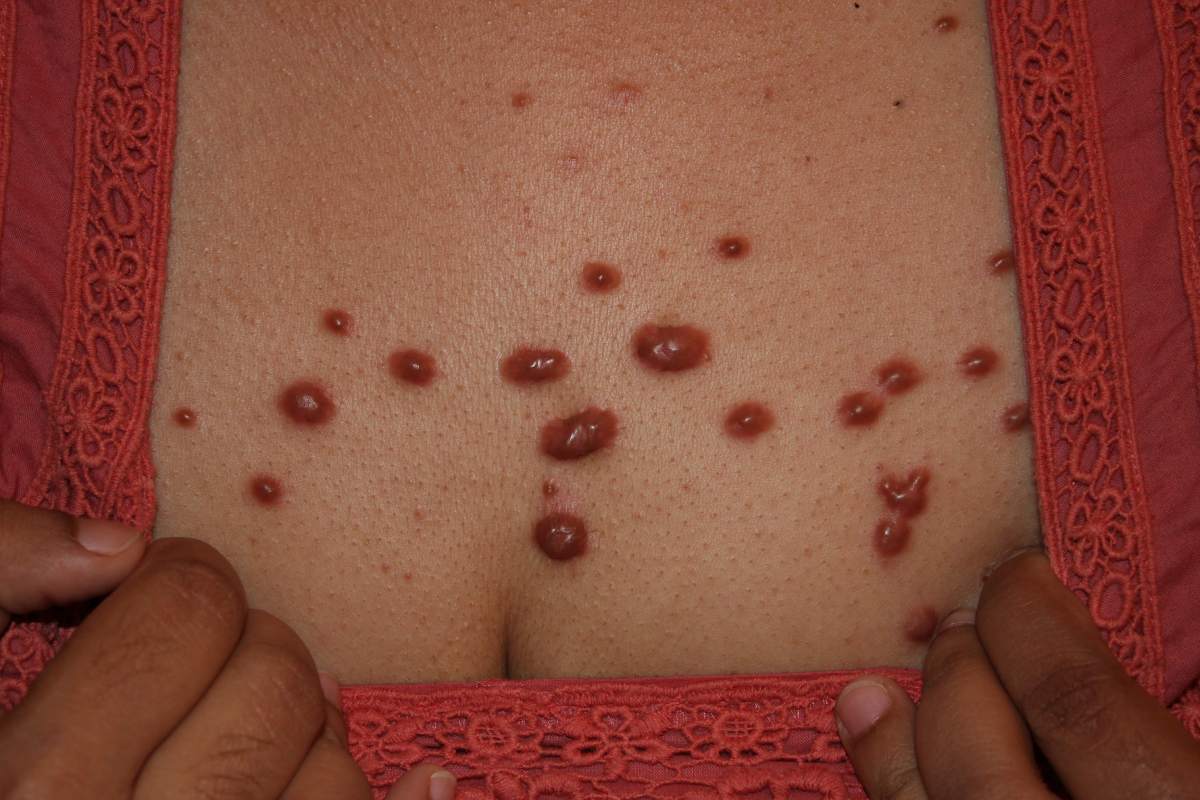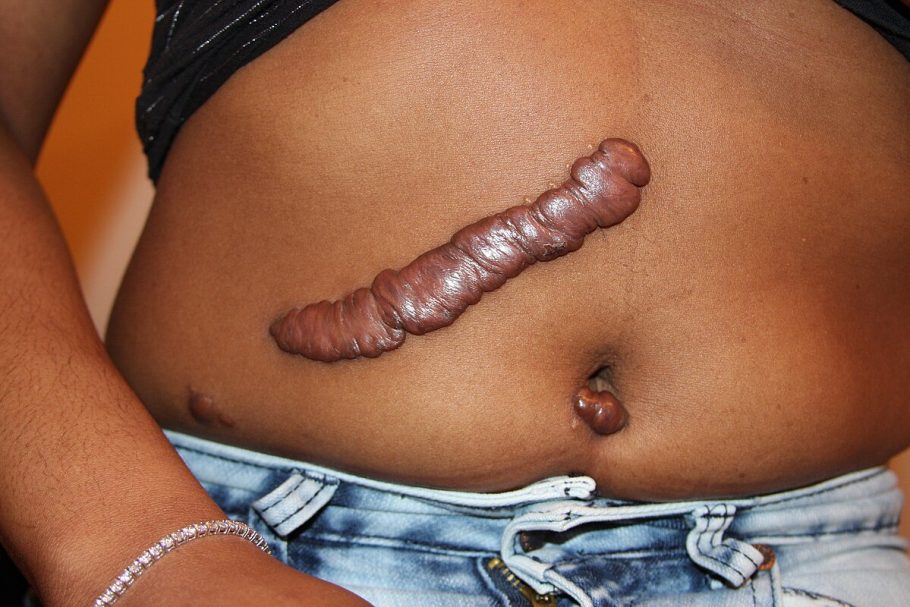If you are dealing with keloids, you may wonder: Can they be removed? What are the best methods for removing keloids? Read this for more
Keloids are raised, thickened areas of scar tissue that form due to an overgrowth of fibrous tissue after an injury, surgery, or even minor skin trauma. These scars often extend beyond the original wound site and can be itchy, painful, and aesthetically displeasing.
For many individuals, keloids can significantly impact self-esteem and confidence. If you are dealing with keloids, you may wonder: Can they be removed? What are the best methods for removing keloids?
Let’s dive into the different treatment options available and how effective they are.
You might also read:
- What does a right-sided headache mean? What does a stroke headache feel like? What kind of headaches should I worry about?
- What’s winter blue? Is it a real thing? How common are winter blues? How do you break the winter blues?
- How many days a week should I do CrossFit? Is CrossFit 3 times a week enough?
Can Keloids Be Removed?
The short answer is yes, keloids can be treated and, in many cases, removed or significantly reduced in size. However, treating keloids can be tricky, as they tend to recur even after removal. The effectiveness of treatment largely depends on the size, location, and duration of the keloid, as well as individual healing patterns.
Keloid treatment aims to flatten the scar, reduce symptoms like itching or discomfort, and improve the appearance of the affected area. However, because of their persistent nature, achieving a complete cure is challenging. It’s important to work closely with a dermatologist or plastic surgeon to determine the most suitable approach for your specific case.

Best Ways to Remove Keloids
There are several treatment options available for keloid removal. The choice of treatment depends on various factors, including the size, depth, and location of the keloid. Here are some of the most effective methods for treating keloids:
1. Steroid Injections
Steroid injections, usually with corticosteroids, are one of the most common treatments for keloids. This method involves injecting steroids directly into the keloid to reduce inflammation, decrease collagen production, and soften the tissue. Steroid injections can help flatten keloids and reduce symptoms like itching or pain.
How It Works:
- Corticosteroids are injected into the keloid every 3 to 4 weeks over several months.
- The treatment helps to reduce the size of the keloid, though it may not completely remove it.
- Multiple sessions are often required for the best results.
Pros:
- Minimally invasive and relatively safe.
- Can reduce the size and discomfort of keloids.
- No downtime is required.
Cons:
- Recurrence is possible.
- Prolonged use of steroids may thin the skin or cause pigment changes.
2. Surgical Excision
Surgical removal of keloids is another option, especially for larger or more stubborn scars. In this procedure, the keloid is carefully cut out, and the skin is closed with stitches. However, the challenge with surgical excision is that keloids have a tendency to regrow, sometimes even larger than before.
How It Works:
- A surgeon removes the keloid tissue, taking care to minimize trauma to the surrounding skin.
- Often, other treatments like steroid injections or radiation therapy are combined with surgery to prevent recurrence.
Pros:
- Can remove large or deeply embedded keloids.
- Immediate improvement in appearance.
Cons:
- High risk of recurrence, especially if surgery is not combined with other treatments.
- Potential for additional scarring.
3. Cryotherapy
Cryotherapy involves freezing the keloid with liquid nitrogen. This technique is particularly effective for smaller keloids or when used in combination with other treatments like steroid injections. The cold temperature damages the keloid tissue, causing it to shrink and flatten over time.
How It Works:
- Liquid nitrogen is applied to the keloid, freezing the tissue and causing it to die off.
- The procedure may need to be repeated several times for the best results.
Pros:
- Minimally invasive.
- Can be combined with other treatments for enhanced results.
- No significant recovery time.
Cons:
- May cause pigment changes, especially in darker skin.
- Multiple sessions are needed.
- Best for smaller keloids.
4. Laser Therapy
Laser therapy, specifically pulsed-dye laser treatment, can reduce the size and discolouration of keloids. The laser targets blood vessels within the keloid, reducing redness and flattening the scar over time. Laser therapy is often combined with other treatments for optimal results.
How It Works:
- The laser targets the blood vessels feeding the keloid, causing them to shrink and the keloid to flatten.
- Multiple sessions are typically required, spaced several weeks apart.
Pros:
- Effective for improving the colour and texture of keloids.
- Can be combined with other treatments like steroid injections.
Cons:
- Can be expensive.
- Results are gradual and may require several sessions.
5. Silicone Gel Sheets and Creams
Silicone sheets and creams are non-invasive, over-the-counter options for treating keloids. These products create a barrier over the keloid that hydrates and softens the tissue, helping to flatten and reduce the size of the scar. Silicone products are often recommended as a first-line treatment for small or newly formed keloids.
How It Works:
- Silicone sheets or gel are applied directly to the keloid, providing continuous hydration and pressure.
- Over time, the keloid flattens and becomes less noticeable.
Pros:
- Easy to use and widely available.
- Non-invasive and safe for all skin types.
Cons:
- Results may take several months to become noticeable.
- Best for smaller or newer keloids.
6. Radiation Therapy
Radiation therapy can be used as a last-resort treatment for stubborn keloids that do not respond to other methods. It is often combined with surgical removal to prevent recurrence. Radiation works by reducing the cell activity in the scar tissue, thereby preventing the keloid from growing back.
How It Works:
- Radiation is delivered to the keloid area immediately after surgical excision or as a standalone treatment.
- The therapy inhibits cell division and collagen production, which are key factors in keloid formation.
Pros:
- Can be highly effective in preventing keloid recurrence after surgery.
- Reduces the size and symptoms of existing keloids.
Cons:
- Expensive and not always available.
- Risk of side effects such as skin damage or long-term complications with multiple treatments.
7. Pressure Therapy
Pressure therapy involves applying constant pressure to the keloid using special garments or bandages. This method is commonly used for keloids that form after surgery or trauma, especially in areas prone to keloid formation, like the ears or chest.
How It Works:
- Compression garments or bandages are worn over the keloid for several hours a day.
- The pressure reduces blood flow to the keloid, limiting its growth and flattening the scar.
Pros:
- Non-invasive and generally safe.
- Can be used alongside other treatments for better results.
Cons:
- Requires long-term commitment to wearing the compression garments.
- Results can take several months.
Conclusion
Keloids can be challenging to treat, but there are various methods available to help reduce their size and symptoms. Steroid injections, surgical excision, cryotherapy, laser therapy, silicone gels, radiation therapy, and pressure therapy all offer potential solutions. The best treatment depends on the size, location, and individual characteristics of the keloid. A combination of treatments often yields the best results.
If you are considering keloid removal, consult a dermatologist or specialist at Kamol Plastic Surgery Hospital who can guide you toward the most effective and safe treatment for your specific case.





